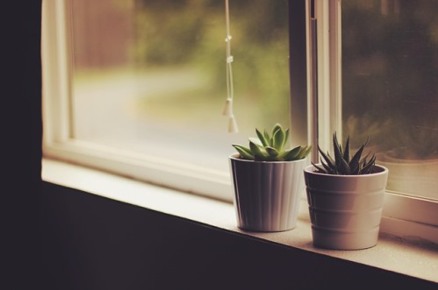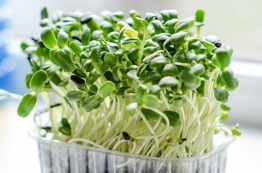Guidelines for growing indoors on detached platforms

All you need to know on setting up detached platforms (matza menutak) for indoor home gardens. Appendix E of the Consumer's Guide to Shemitah.
Click here to download the PDF file.
As a rule, the laws of shemitah apply to soil in open areas, soil indoors, and on detached platforms in open areas.
The laws of shemitah do not apply to growing crops indoors when the growing platform is detached from the ground. For this reason, to facilitate sowing or planting indoors, the indoor structure needs to meet the criteria delineated below. The following guidelines are for home gardens; for large-scale farmers, different guidelines apply.
This appendix deals with when it is permitted to sow or plant indoors during the shemitah year. However, Torah VeHa'aretz Institute believes that when it is unnecessary, it is best to avoid planting during the shemitah year in general, even on detached platforms. This is because there are certain posekim who forbid this. The guidelines below are for situations when there is a need to do so.
In any case, when there are already plants indoors or on the windowsill that were planted before the onset of shemitah, there is no problem to continue to tend to them, and even water them as usual. In the case when such plants are not halachically considered growing on detached platforms, they have kedushat shevi'it (this only includes plants for human consumption, herbs, and fragrant flowers; see Chapter 4).
A. Structure
- The structure should be permanent and not mobile, such as a porch, pergola, and the like.
- If a hothouse, the structure should be composed of strong material that cannot be torn easily, such as polyethylene (nylon). It is possible to use a net only if it is composed of at least 50% material (a 50-mesh net is insufficient—it needs to have 50% material). It is possible to use several nets (laid one on top of the other) for this purpose, as long as they are close together. Two 50-mesh nets are sufficient.
In the case of a pergola, the percentage of holes in the netting should not exceed 50%. It is possible to use a cane mat to shade the pergola, and the like.
A shade or net that can be opened is not considered a permanent roof with regard to defining a "house" vis-à-vis shemitah (unless it is permanently fixed in place). - The height of the structure needs to be at least 80 cm (10 tefachim) from ground to roof. Optimally, it should be at least 80 cm above the planters.
- Optimally, the walls should be at least 80 cm from the ground.
- For porches that are shaded only in part, it is possible to plant only under the shaded portion.
B. Growing platforms
- Planters should be placed on a platform detached from the ground. Ascertain that the surface is composed of strong, waterproof material.
- There is a halachic dispute whether or not a surface that is completely fixed to the ground is considered connected to the ground (and therefore could not serve as a barrier). If the platform is a sheet connected to the ground by nails or stakes, the surface is considered detached from the ground. If it is asphalt, however, it is not considered a detached surface (see below).
- It is possible to use the following materials: strong polyethylene plastic sheets; coated, waterproof Palrig sheets; and galvanized metal panels.
- Lightweight material should not be used: wooden boards, expanded polystyrene foam (a.k.a. Styrofoam, known in Israel as kalkar), cardboard, cement blocks, woven nylon sheets (such as regular Palrig and synthetic grass), and the like.
- Asphalt and concrete surfaces are not sufficient to consider crops growing on them to be detached from the ground. The materials specified above should be placed on such surfaces, for two reasons: (1) Often asphalt and concrete crack, so plants can derive their nourishment from the soil; (2) some maintain that since these surfaces are connected permanently to the ground, they are secondary to it.[1]
- Ceramic tiles on asphalt or cement are not sufficient, lechatchilah. For this reason, if the planter is indoors an additional detaching surface is necessary (this is true for the ground-floor or basement; see §10 below).
- The area should be wide enough so the plants do not protrude from the hothouse, even when the plants reach their full width and height.
- Indoor planters with a dish underneath (even if only to collect water) should be wide enough so that leaves and branches do not protrude from them. This dish should not be ceramic (ceramic is porous).
- The area needs to be kept clean so that even a thin layer of dirt (that can be used to sow seeds) does not cover it.
- When growing plants indoors on the first floor or higher, there is no need for an additional surface to detach plants from the ground. Planters may be placed directly on the floor.
- If there is a planter on the windowsill, ensure that there is a detaching surface above and below it. The best solution is when there are three partitions for the windowsill (that is, the windowsill is a niche, so there are two walls on either side, in addition to the outer wall of the house, so it is closed from three sides). However, if the windowsill protrudes outside of the outer wall of the house and is not closed on either side, it is sufficient. See §A.4 above.
- Ensure that the plant does not spread out where there is no detaching surface (generally, plants tend to grow towards light and heat sources).
C. Planters
- Do not spread dirt or a growing substrate on the detached surface. Use only a planter/flowerpot.
- The volume of each planter may not exceed 70 L (this is a size that average people can move by themselves, or at least push by themselves); it doesn't help to have a nylon sheet to divide a larger planter—each planter is considered an individual unit. In extenuating circumstances, it is possible to be lenient and use a planter whose volume does not exceed 40 se'ah, approximately 330 L—each situation should be dealt with on an individual basis. The size of the perforation in the planter should not exceed 1 cm2; all perforations in the planter together should not exceed 2 cm2.
- Planters may be filled with all sorts of growing substrates, such as: dirt, tuff, perlite, peat, coconut fiber, sand, and the like.
- It is not problematic if leaves protrude from the planter, as long as the entire plant (branch extensions and leaves included) is sitting on a surface detached from the ground. However, if branches or leaves spread out to the ground in areas that are not detached surfaces, the plant receives its nourishment from the ground and is not considered detached from it. This is the case even if the plant does not actually touch the ground, and is only hanging directly above it (without a detaching surface in between).
- If all of the above criteria are met, it is possible to plant in such planters and perform all actions necessary for the plant. Plants growing in such planters do not have shemitah sanctity. Terumot and ma'aserot should be separated from such crops, due to doubt (without a blessing)—both ma'aser sheni and ma'aser ani.
[1] While we are lenient with surfaces that are attached to the ground (see §B.2 above), we are only lenient with surfaces that (1) do not crack and (2) are not hermetically connected to the ground. For surfaces that can crack or are hermetically connected to the ground, such as cement and asphalt, we are stringent lechatchilah. Such surfaces are not considered barriers.




